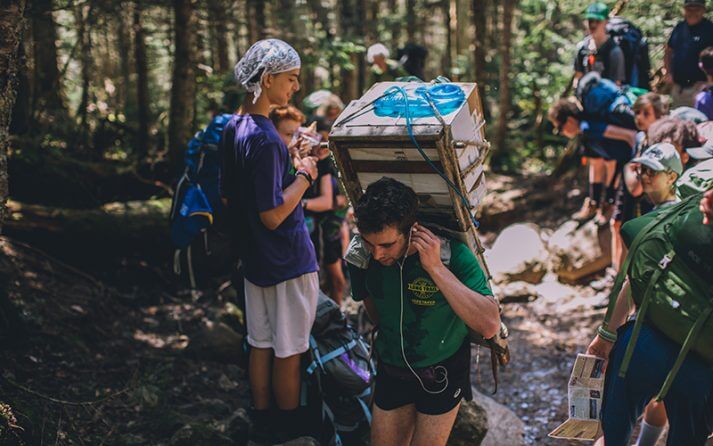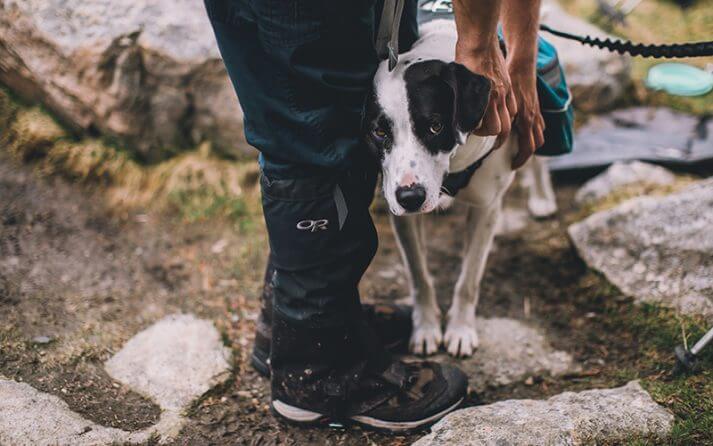
Humans come to the backcountry for peace, quiet, and to escape the noises and pressures of daily life. Leave No Trace requires that we remain respectful of other visitors to the natural spaces we love.
We all remember the Golden Rule: “Do unto others as you would have them do unto you.” Put simply, treat others the way you would like to be treated. This proverb extends to our relationships with fellow hikers, climbers, campers, and paddlers and sums up the seventh and final Leave No Trace principle.
“Each of us enjoys being outdoors for different reasons, and it is important to try to have your actions not effect someone else’s experience,” says Alex DeLucia, Leave No Trace programs manager at AMC.
Keep a low profile
We head outdoors to escape from the bright lights, bold colors, and loud noises of our cities and towns. Avoid using bright-colored clothing or equipment, and instead opt for more neutral hues that blend in with nature. (Exceptions to this may include winter excursions to avalanche-prone areas or visits to spaces where recreational hunting is allowed.)

Use headphones on the trail rather than speakers to preserve a peaceful outdoor experience for others.
Keep it down
Loud noises, either from conversations or electronics, can put a damper on someone else’s experience outdoors. Keep any music private by using headphones, but be aware of others on the trail who may be trying to get your attention. Groups should keep their conversation volume low, taking into account that noise travels farther when spending time around lakes and ponds. DeLucia says AMC enforces quiet hours after 10 p.m. at all its lodges, huts, and campsites to “let nature’s sounds prevail” and intentionally keeps group sizes small to minimize impacts on the land and respect fellow visitors.
“The experience of one group being loud and having a great time can conversely be the worst experience for another group,” DeLucia says. “Being polite, respectful, and quiet go a long way in ensuring everyone can enjoy these public resources.”
Avoid participating in phone calls or listening to loud music, although you may also want to use your hike or paddle as an excuse to take a break from mobile technology altogether.
Keep trail protocols
Being considerate outdoors requires giving others plenty of space to pass on narrow trails. Generally speaking, a trail user traveling downhill will step off to the side onto a hard surface to let uphill travelers pass. In many places, the assumption is that bicyclists will defer to hikers and equestrians on trails, but call ahead or check online to see how trail protocols may differ. Always remember that permitted activities vary from space to space and that tolerance and friendliness should extend to all on the trail—whether they’re riding horseback, on a mountain bike, using an all-terrain vehicle, or trail running. On the flip side, check with the land manager to ensure your preferred mode of transportation is permitted before making the journey.

Pets can enhance our experience of the outdoors, but they must always remain near us and under our control.
Keep pets under control
Finally, in spaces where pets are permitted, they should remain leashed in most cases and under control at all times. Pick up and pack out dog waste to preserve the experience of the person or group behind you on the trail, and minimize barking both to respect others and area wildlife.